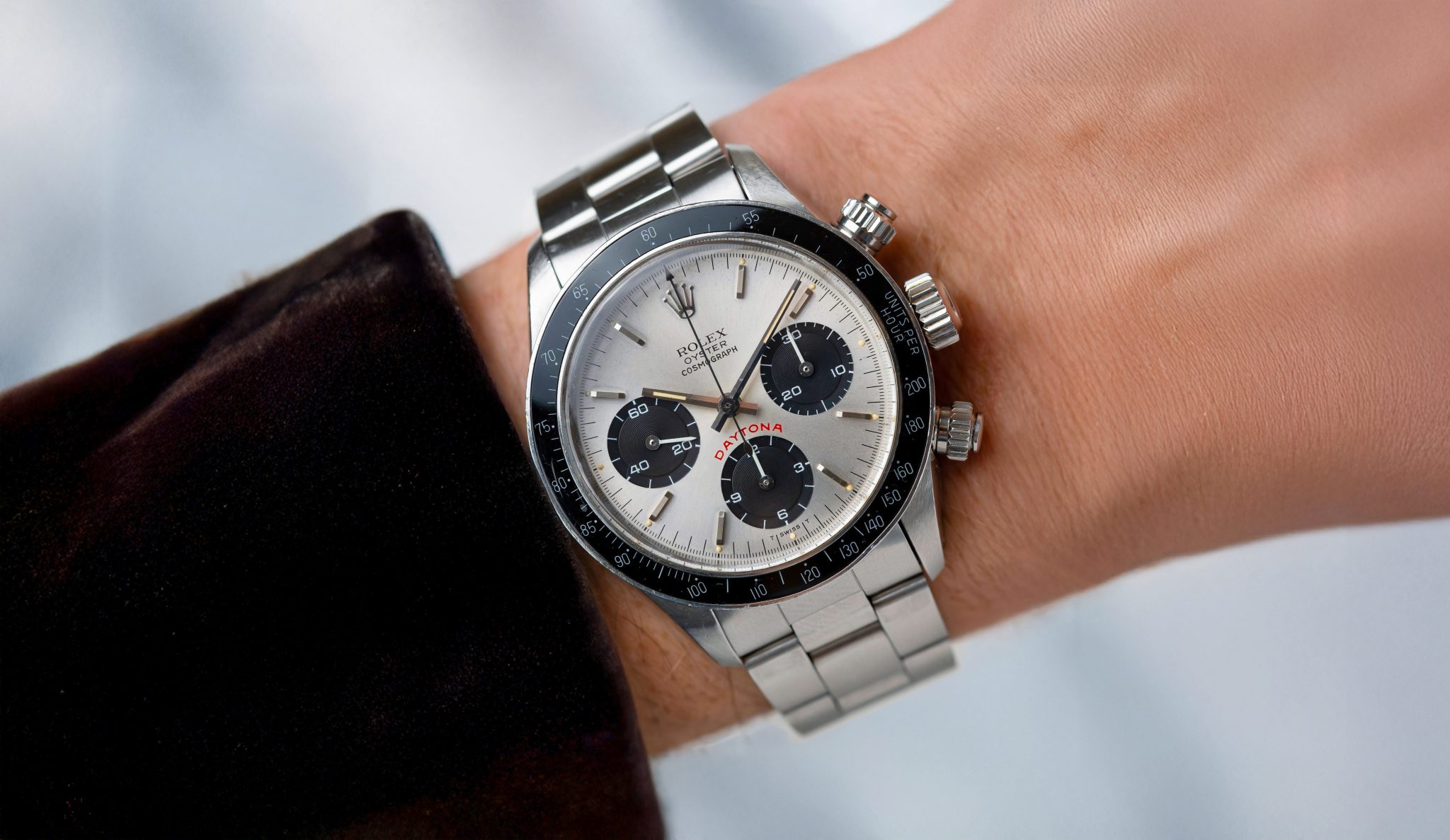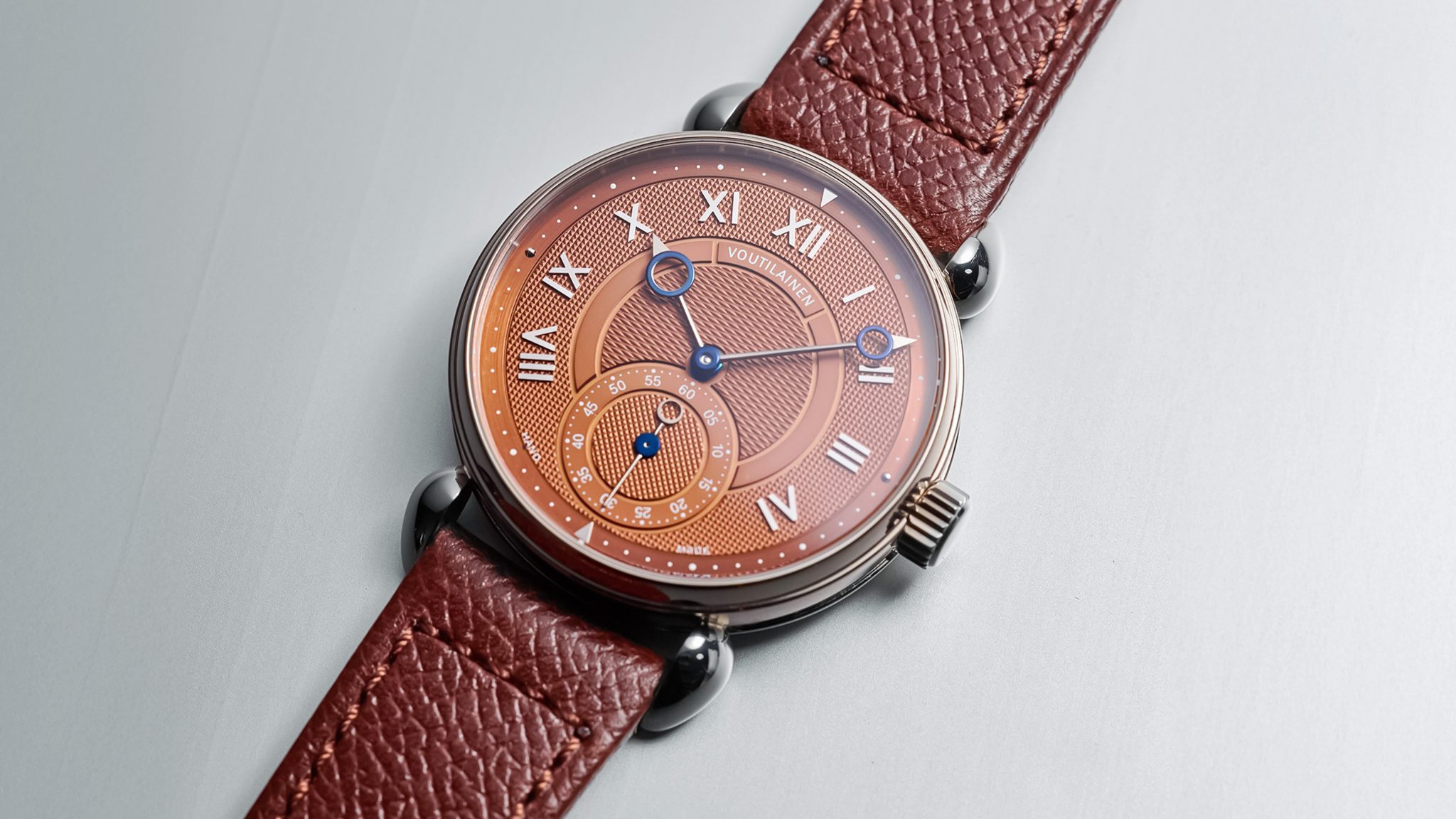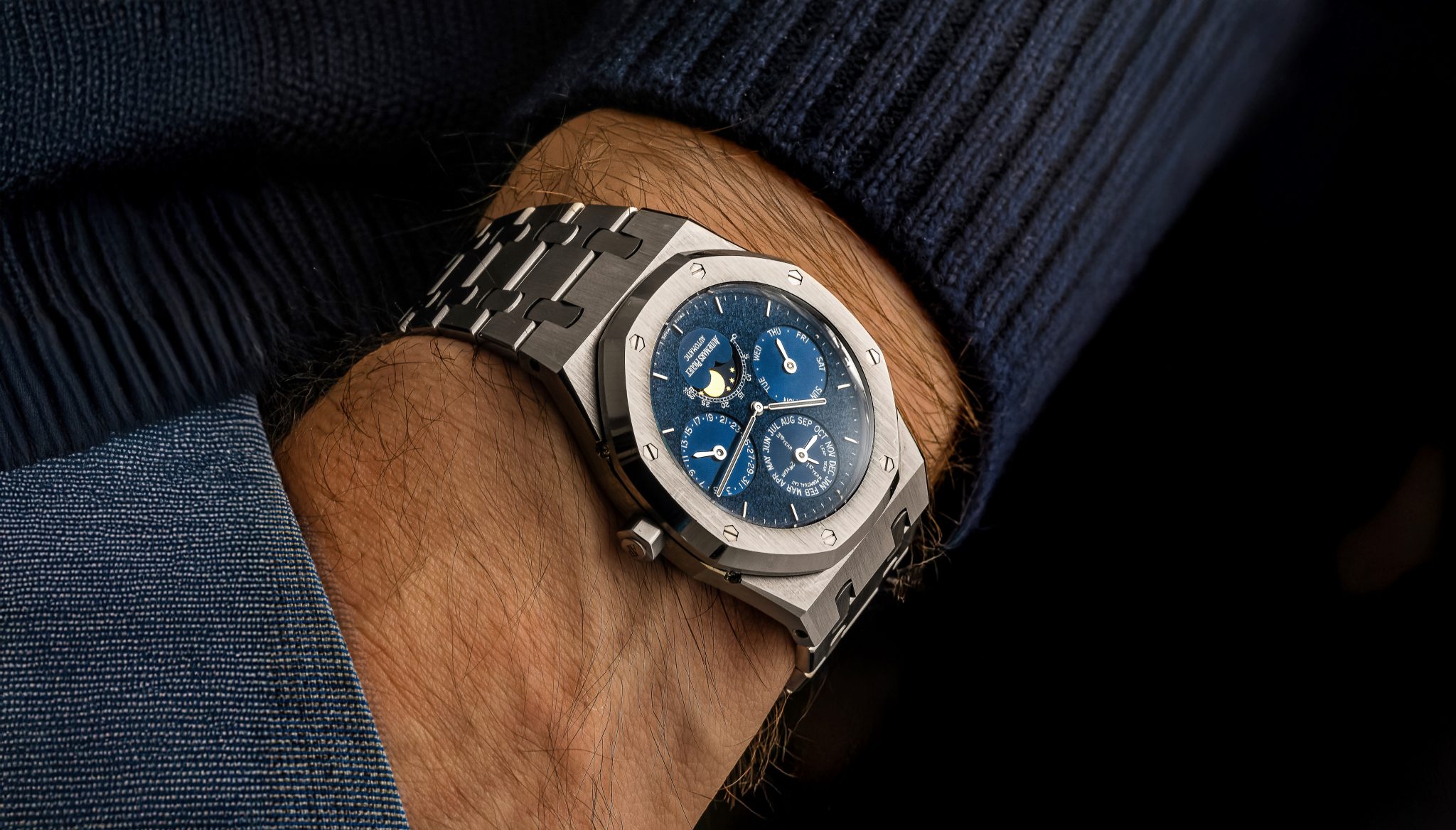
Tuscan Dial 25820ST Audemars Piguet Royal Oak Perpetual Calendar
This is everything the John Mayer Royal Oak QP should have been. It’s a Tuscan dial 25820ST. The ref. 25820 was the first Royal Oak QP to include leap year indication, marking the handoff from true vintage to neo-vintage in most collector’s minds. More importantly, 25820 also introduced a range of extremely characterful dials, from tapisserie to Yves Klein. King of them all, for most collectors, are salmon and Tuscan. This is the latter, one of the most spectacular performances of handcraft ever to to adorn an AP dial. It’s so much more than just blue and textured, becoming a highly coveted collecting category in its own right these days. In the Royal Oak, across all variants, there are thought to be fewer than 25 of these surviving.
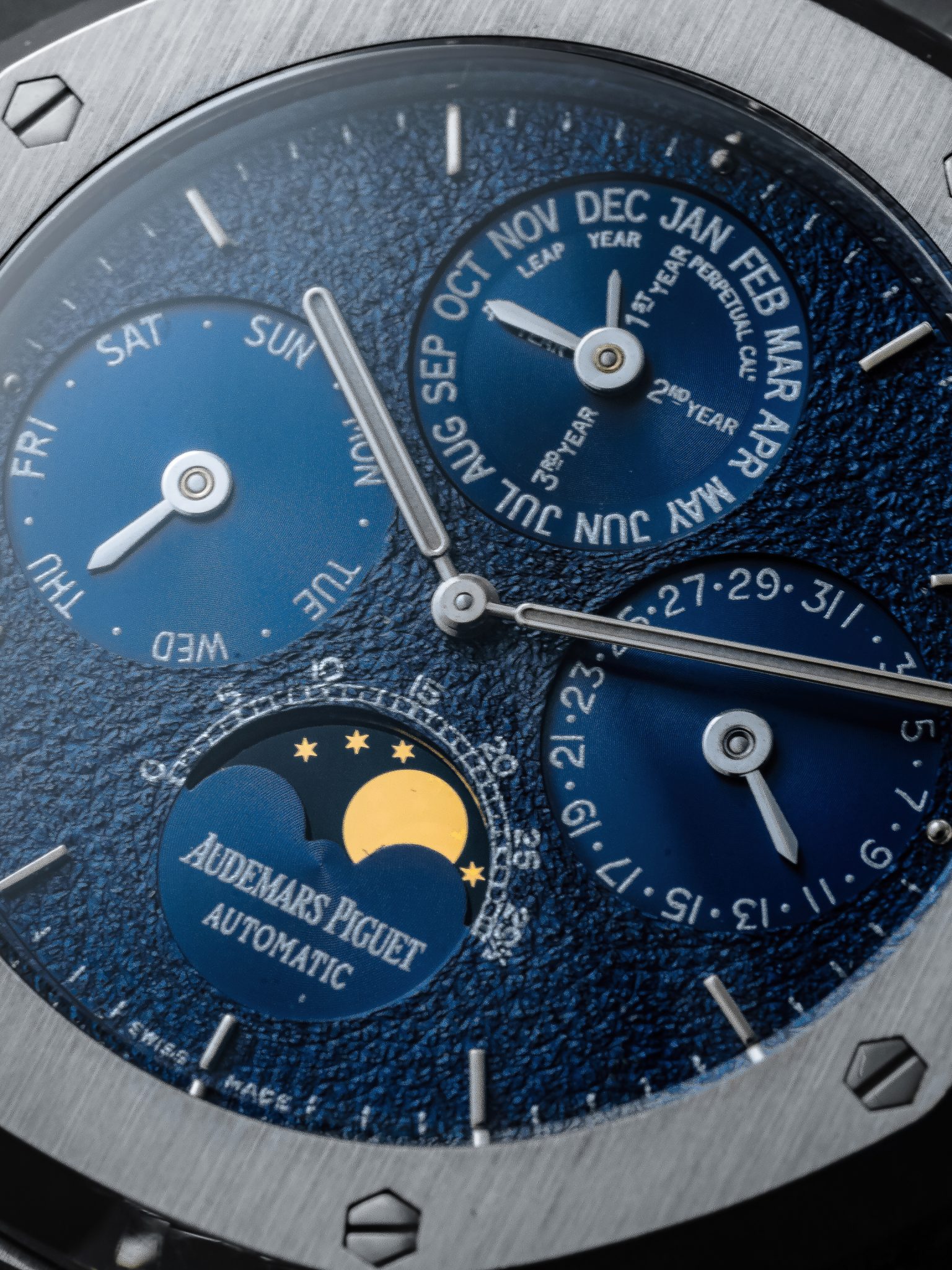
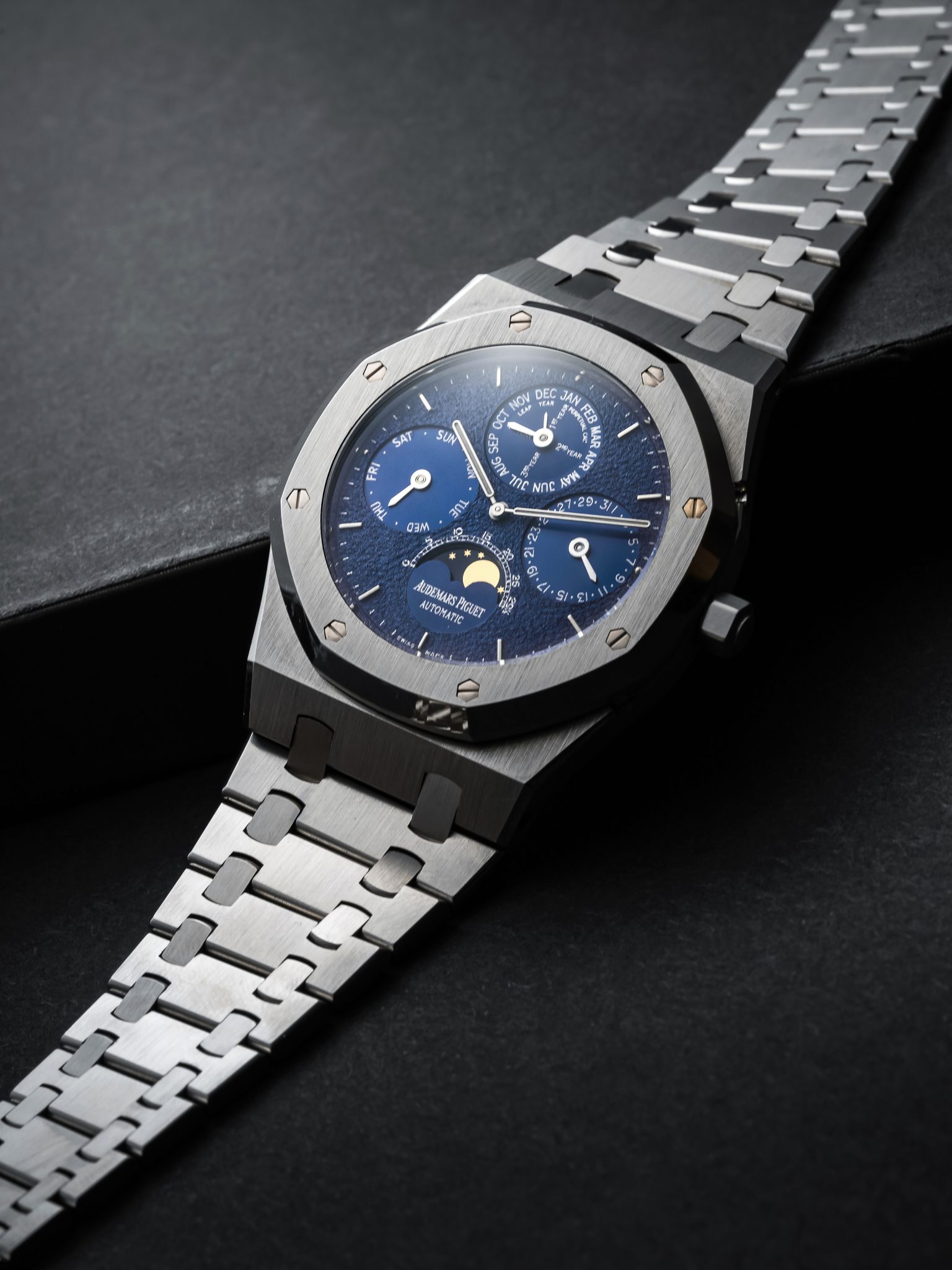
Akrivia, Moritz Grossman, Winner, and Lange (in Handwerkskunst) have all embraced the extreme time invest of hand-hammered dials, sometime known as tremblage. Before this revival, it was a finishing art rarely performed on dials, originally a type of frosting for bridges applied dial side. Audemars Piguet introduced this finishing under the name ‘Tuscan’, a hand hammered burin texture with thousands of tiny craters made by hand. This isn’t a texture created by some electrolysis process or coating, this is just metal beaten by hand into something more. Tuscan dials are then galvanized to create a rich, slightly varying blue. They’re in Royal Oaks and the 36mm QPs like the 25657 or oddball 25561. It’s like tapisserie with an emphasis on the tap. Little else is known and they’re, in short, always a big deal. Largely because Audemars Piguet do not choose to dedicate this degree of time to singular standard production dials today.
Between 25820 and 25686 (they do exist earlier in pre-leap year), you’ll find Tuscan dials usually command a near-doubling of value in auction results and private sales alike. There is a debate whether they were ever offered in TA or tantalum cases, which is still evolving. Little else is known of them. The dial is so special that I haven’t even mentioned the 25820 itself and the fact that they’re just 9.3mm thick with a calibre developed from the 5548 with a display back and exhibition rotor. Nothing comes close, save for independents and Lange. Definitely not modern AP. Now if you want to have a real headache just try to figure out if these are service hands.
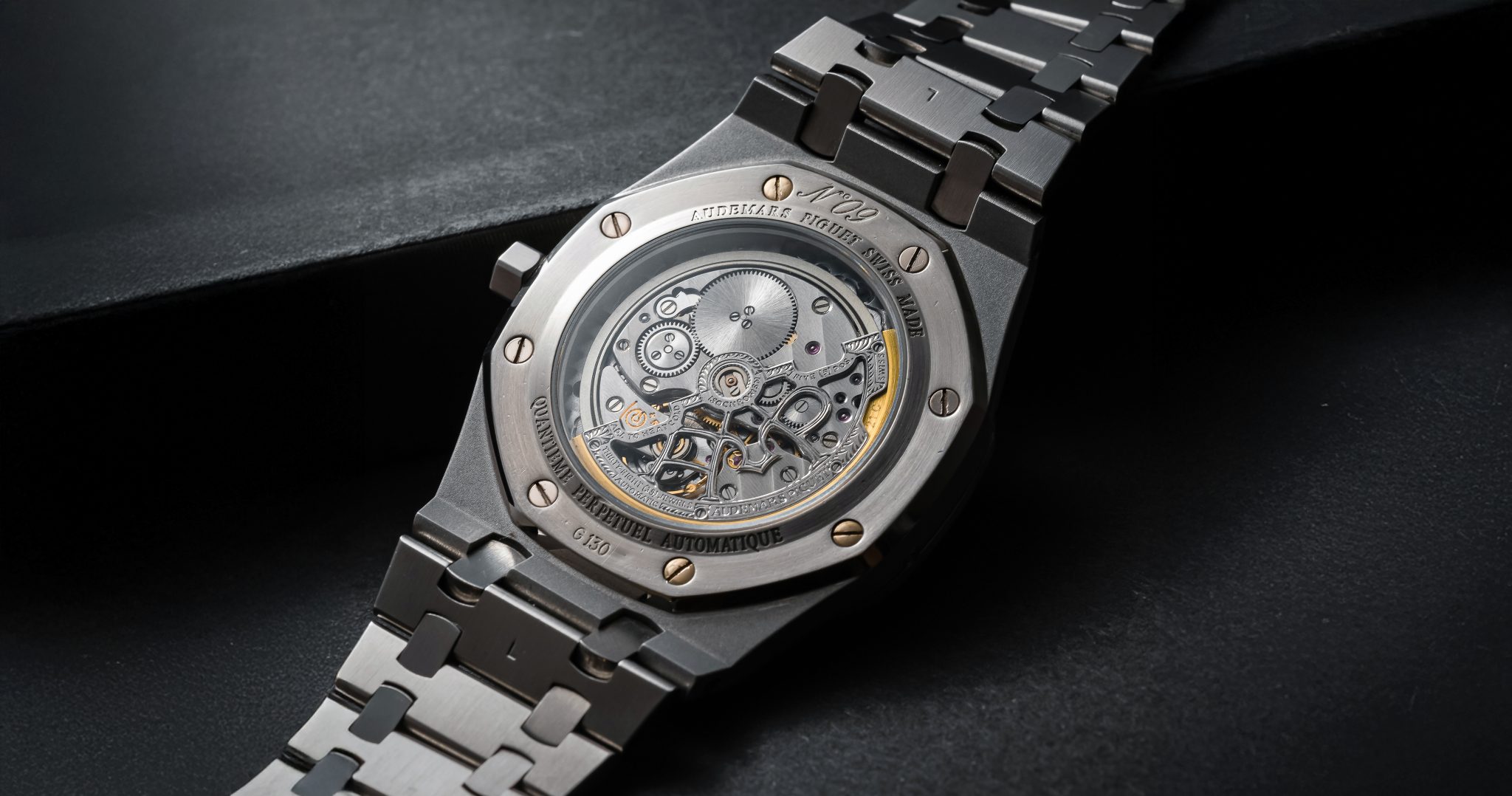
Let’s get into it: the case is great. The dial is even greater (mixed caps AP signature is right for a dial this late). The hands are question mark, you’d want to see something on the extract noting luminous hands or it does make one wonder. Most examples do have the conically polished non-luminous hands, however you do see odd combinations sometimes like this in this ref so it’s a question mark. It comes from a well-regarded Swedish retailer. A special thank you to Alex Teuscher for the photography.







